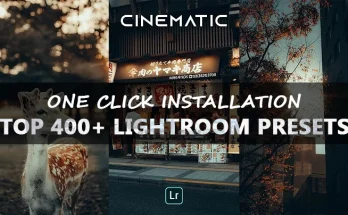In the vast expanse of digital photography, the craft of image refinement is as paramount as the act of seizing the initial frame. Amidst an arsenal of post-processing methodologies, one technique emerges with an unparalleled ability to transmute the ordinary into the extraordinary—Dark Tone Effect Photo Editing. This transformative art form heightens depth, augments contrast, and subdues highlights, bestowing images with an enigmatic allure that captivates and enthralls.
This exhaustive discourse unravels the intricacies of Dark Tone Effect Photo Editing, shedding light on its defining attributes, multifaceted applications, and the subtle equilibrium between its merits and constraints.
The Quintessence of Dark Tone Effect Photo Editing
Dark Tone Photo Editing is an avant-garde manipulation technique designed to enrich visual narratives by intensifying shadow play, restraining luminosity, and amplifying contrast to evoke a cinematic gravitas. Predominantly utilized in haute couture photography, fine art compositions, landscape imagery, and meticulously curated social media feeds, this style injects photographs with a brooding depth and an evocative atmosphere.
Hallmark Features of Dark Tone Editing:
- Amplified Shadow Realms: Enhances spatial perception, lending an almost sculptural depth to the composition.
- Subdued Highlights: Moderates excessive brightness to achieve a harmonized, moody aesthetic.
- Refined Color Grading: Implements cool, desaturated hues, fostering a cohesive and contemplative visual tone.
- Elevated Contrast: Directs focus towards pivotal elements, sculpting a commanding visual hierarchy.
The Singular Charm of Dark Tone Editing
What bestows Dark Tone Effect Photo Editing with its unparalleled allure is its ability to weave emotion and narrative into visual artistry. This technique transcends mere aesthetics, immersing viewers in a realm where shadow and light dance in harmonious discord.
Distinctive Strengths:
- Mood Induction: Whether exuding an air of mystery, passion, or intensity, this style adeptly forges immersive atmospheres.
- Timeless Elegance: The resulting imagery possesses an enduring sophistication, making it ideal for museum-worthy compositions and high-fashion portfolios.
- Undistracted Emphasis: By stripping extraneous distractions, this method ensures the viewer’s gaze remains firmly anchored to the core subject.
- Versatile Adaptation: Spanning from gothic aesthetics to grand cinematic compositions, this effect offers boundless creative freedom.
Expanding Its Reach Across Artistic Domains
The Dark Tone Effect is a chameleon of the photographic world, seamlessly integrating into various creative and commercial spheres. Here’s where its impact is most pronounced:
| Field | Purpose |
|---|---|
| Fashion Photography | Conjures avant-garde, editorial magnificence through daring tonal interplay. |
| Fine Art | Endows portraits and landscapes with a sense of timeless grandeur. |
| Social Media Curation | Lends feeds a meticulously polished, cohesive aesthetic. |
| Event Photography | Captures the atmospheric intensity of ceremonies, concerts, and intimate gatherings. |
| Commercial Imaging | Crafts striking visual statements for branding and advertising. |
Narrative Embodied Through Shadows
At its core, the Dark Tone Effect is a conduit for storytelling. It transcends mere technical enhancement, breathing life into imagery by infusing it with emotive resonance. The nuanced interplay of darkness and illumination transforms static frames into narratives brimming with sentiment and intrigue.
Thematic Undertones:
- Mystique and Intrigue: Tailor-made for cinematic and noir-inspired compositions.
- Refinement and Prestige: Ideal for high-fashion and luxury branding.
- Sentimentality and Nostalgia: Muted hues evoke a wistful reminiscence of bygone eras.
Weighing the Pros and Cons of Dark Tone Editing
Advantages:
✔ Instills a captivating, high-drama aesthetic.
✔ Amplifies the emotional gravitas of an image.
✔ Accommodates an extensive range of artistic interpretations.
✔ Directs attention with surgical precision to the subject.
✔ Suits diverse genres, from portraiture to scenic vistas.
Disadvantages:
✘ Incompatible with imagery necessitating vibrancy and exuberance.
✘ Excessive manipulation risks an unnatural, excessively shadow-laden outcome.
✘ Requires adept proficiency in editing software for optimal execution.
✘ Overuse may obscure critical details, diminishing visual clarity.
✘ Can impart an overwhelmingly somber or melancholic tone when misapplied.
Conclusion
Dark Tone Effect Photo Editing epitomizes the alchemy of digital artistry, equipping photographers and editors with the means to evoke emotion, depth, and narrative sophistication. However, as with all creative endeavors, mastery and restraint are indispensable. Whether deployed in the realms of fashion, fine art, or beyond, this technique unlocks a trove of artistic potential. Whether a seasoned maestro or an emerging visionary, embracing the Dark Tone Effect can catapult your photographic expression into new, mesmerizing dimensions.
Frequently Asked Questions (FAQs)
What is Dark Tone Effect Editing?
A post-processing technique that accentuates shadows, restrains highlights, and enhances contrast to create striking, emotive imagery.
Which tools are best for achieving this effect?
Industry staples such as Adobe Photoshop, Lightroom, and mobile applications like Snapseed are excellent for executing this aesthetic.
Is this technique suitable for beginners?
Yes. Most professional-grade editing platforms provide intuitive presets to facilitate ease of use for novices.
Which photographic genres benefit most from this effect?
This technique flourishes in portraiture, fashion photography, fine art, and landscape imagery.
How can over-editing be avoided?
Strive for equilibrium, refining shadows and highlights in a manner that maintains a natural yet evocative allure.
🎨 Love Photo Editing & AI Prompts?
Join our WhatsApp Channel to get the latest AI art prompts, editing tips, and exclusive resources!
👉 Join Now on WhatsApp



